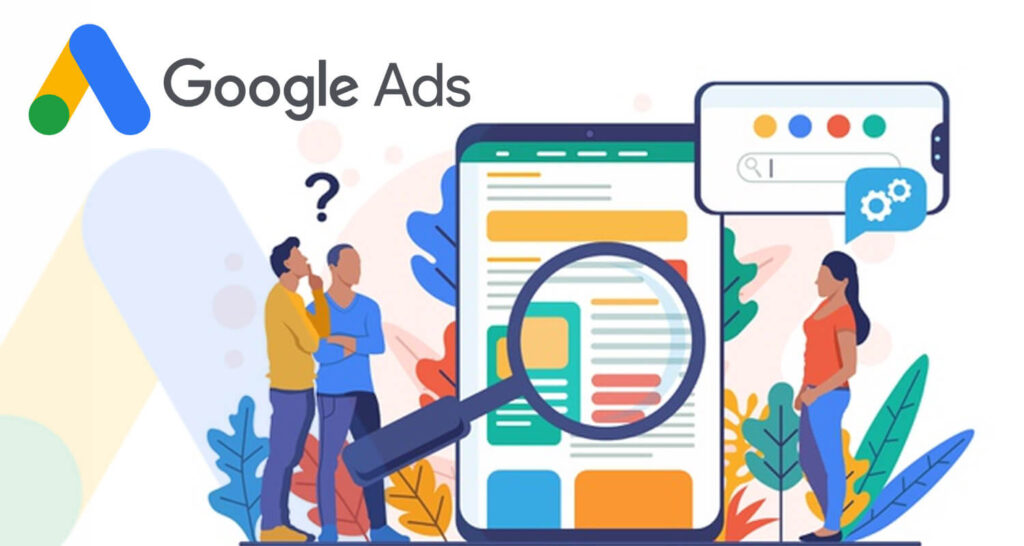Grow Your Business With Just Grows Pay-Per-Click Advertising Services
Do you need a speedy sales increase? If so, you’ve landed on the right page. To put it simply, we are India’s top ppc agency. With pay-per-click (PPC) advertising, you may quickly and easily appear on relevant websites and in high search engine rankings for a fee.
Once your PPC ads are up and running, our PPC specialists will monitor them and tweak them as needed, potentially doubling or tripling your sales. Our expertise in segmenting your consumer base, analysing their actions, and sending them personalised marketing messages sets us apart from the competition.
The question then becomes, “Why wait?” Quickly give us a call.

Our PPC Advertising Strategies
We are the leading India-based pay-per-click (PPC) advertising agency because of our commitment to our clients’ businesses and our ability to generate a high return on investment (ROI) for them through diligent monitoring, keyword optimization, and methodological refinement. We have global clients who entrust us with their pay per click service.
What Can Your Company Gain From Pay-Per-Click Advertising?
First, why is pay-per-click advertising so crucial to businesses? So, what does ppc in digital marketing stand for, exactly? The user must pay for each click in a pay-per-click (PPC) system. Put another way, it amounts to delivering a customer to check out your website.
We’ll have to pay for advertising to get to the top of Google’s search results. Getting good search engine rankings naturally takes time. Instantaneous and reliable, PPC delivers.
Your company’s key performance indicators (KPIs) become the focus of your PPC campaign, generating more leads. More potential customers means more cash in the bank.
LET US KNOW WHAT YOU LOOKING FOR ?
BENEFITS OF PPC ADVERTISEMENT
Lesser number of Entry Barriers
Pay-per-click (PPC) advertising is a form of online advertising that allows businesses to reach their target audience by placing ads on search engines and websites. One of the main benefits of PPC advertising is that it has relatively low entry barriers, which makes it accessible to businesses of all sizes.
Batter Brand Visibility
Pay-per-click (PPC) advertising can be an effective way for businesses to increase brand visibility and reach their target audience. PPC allows businesses to place ads on search engines and websites, making it easy for customers to find and learn about their products or services.
Comprehensive Targeting
Pay-per-click (PPC) advertising is an effective way for businesses to reach their target audience by placing ads on search engines and websites. One of the key advantages of PPC advertising is the ability to use comprehensive targeting options to reach the desired audience.
Quick Turnover
PPC (Pay-Per-Click) quick turnover refers to the ability to quickly generate leads and conversions through PPC advertising. This can be achieved through a variety of strategies, such as targeting high-converting keywords, creating compelling ad copy, and optimizing landing pages for conversion.
We Provide PPC Management Services
Planning & Analysis
In ppc marketing, you place bids on specific search terms used by potential customers. Then, use that keyword in an ad to drive people to your site.
Keyword Targeting
As India’s top PPC management firm, we put in the time and effort necessary to identify the most effective keywords for your campaign. This will turn them into possible buyers.
Designing Landing Page
Having a landing page ready for users to arrive at after clicking on adverts is essential. The customer will purchase on this page.
Launching Campaign
The advertising campaign can go live after conducting keyword research and developing the landing page. We then make bids on relevant keywords to boost your business’s rankings.
Audit
There will be routine keyword audits performed. We offer ppc services, optimising and overseeing your entire campaign.
Reporting
Afterwards, we update our clients on the ads’ performance and the results we’ve gotten for them. Clicks and conversion rates will be included in the report.
Introduction to Just Grows Pay Per Click Advertising Services
Google Search Ads are a form of paid advertising that appears at the top of the search engine results page (SERP) when a user conducts a search on Google. These ads are created by businesses and are triggered to appear when a user’s search query matches the keywords associated with the ad. Google Search Ads are powered by Google AdWords, which is the platform businesses use to create, manage, and track their ads.
Advertisers are charged each time a user clicks on one of their ads, which is why this type of advertising is referred to as “pay-per-click” (PPC). Advertisers can bid on specific keywords and phrases, and their ads will appear in the sponsored results section of the SERP when a user conducts a search using those keywords. Ads can also be targeted to specific demographics, such as location and language, to ensure they reach the intended audience.
Google Display Ads are a type of online advertising that allows businesses to display graphical ads on websites that are part of the Google Display Network (GDN). The GDN is a collection of millions of websites, videos, and apps that have agreed to show ads from Google’s advertising network. These ads can be in various formats such as text, images, videos and rich media. They can be targeted to specific audiences based on factors such as demographics, interests, and online behavior. Advertisers can also use retargeting to show ads to users who have previously visited their website. Overall, Google Display Ads offer businesses a way to reach a large audience and increase brand awareness.
Google Social Ads are a type of online advertising that allows businesses to promote their products or services on social media platforms such as Google+ and YouTube. These ads are typically displayed in a user’s social feed, and can be in the form of text, images, or videos.
One of the key benefits of Google Social Ads is the ability to target specific audiences based on factors such as demographics, interests, and online behavior. Advertisers can also use retargeting to show ads to users who have previously engaged with their brand on social media.
Google Remarketing Ads, also known as retargeting ads, are a type of online advertising that allows businesses to show ads to users who have previously visited their website. This is done by placing a small piece of code, called a “remarketing tag” or “pixel,” on the business’s website. The code collects information about the users who visit the website and adds them to a remarketing list.
Once a user is added to a remarketing list, they can be shown ads as they browse the internet on the Google Display Network (GDN), which is a collection of millions of websites, videos and apps that have agreed to show ads from Google’s advertising network. Advertisers can also use Google Social Ads to show ads to users who have previously engaged with their brand on social media platforms such as Google+ and YouTube.
Google Shopping Ads are a type of online advertising that allows businesses to promote their products on Google. These ads are displayed in the Google Shopping section of search results, and show users an image of the product, its price, and other relevant information such as the store’s name and rating.
Google Shopping Ads are generated from a product feed, which is a file that contains information about a business’s products, such as product name, image, price, and description. Businesses can upload the product feed to their Google Merchant Center account, and then create ads for their products in Google Ads.
In-stream ads are a type of online video advertising that allows businesses to display ads before, during, or after a video on platforms such as YouTube and other video streaming websites. These ads are typically 15-30 seconds in length, and can be in the form of a pre-roll, mid-roll, or post-roll ad.
Pre-roll ads are displayed before the video starts, mid-roll ads are displayed during the video, and post-roll ads are displayed after the video has finished. In-stream ads can be skippable, which means that users have the option to skip the ad after a few seconds, or non-skippable, which means that users have to watch the entire ad before they can view the video.
Because PPC includes the hard-earned money of advertisers, it takes competence. At Battersea, we have the most qualified, professional, and experienced team to manage your PPC campaign on Google, Bing, and other well-known search engines. Battersea’s PPC specialists handle every PPC-related aspect, from developing a campaign strategy to choosing the appropriate keywords, and deliver successful results in terms of lead generation and an increase in the number of visitors.

Why You Should Hire Us
Our top priority has always been to maintain the trust of our customers. One of the most efficient ways to boost your brand’s profile on the web is with the help of our pay-per-click advertisements. Our trained team consistently analyses the market and your ideal customer to determine where to display your adverts best.
Find reliable google ads services to handle your company’s needs. Given that you will be forking cash to Google (or whichever search engine) every time your ads are clicked. While PPC advertising and management can be accomplished quickly, a thorough understanding of the campaign’s performance is essential.
You need to hire a PPC firm that offers expert PPC advertising that generates a substantial return on investment. Many PPC agencies make the same mistakes, such as targeting the wrong demographic with broad rather than specific keywords and not paying close enough attention to the website itself.

